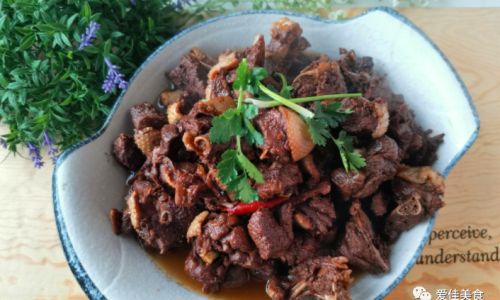Stewing goose meat is a culinary tradition that spans centuries and continents, celebrated for its ability to transform a tough, flavorful bird into a tender, aromatic masterpiece. Unlike chicken or turkey, goose meat boasts a richer, deeper taste profile, with layers of fat that render down during slow cooking to create a succulent, melt-in-your-mouth texture. Whether you’re a home cook looking to elevate your Sunday dinner or a seasoned chef experimenting with rustic European cuisine, mastering the art of stewing goose meat opens doors to a world of hearty, comforting dishes. This guide will walk you through every step of the process, from selecting the perfect bird to serving a dish that impresses even the most discerning palates.

Understanding Goose Meat: Why Stewing Works Wonders
Goose meat is notoriously leaner than duck but fattier than chicken, with a dense muscle structure that requires slow, gentle cooking to break down. Stewing—a method that involves simmering meat in liquid at low temperatures for an extended period—is ideal for goose. This technique allows the collagen in the connective tissues to dissolve into gelatin, resulting in tender, flavorful meat and a rich, silky broth. The process also melts the goose’s subcutaneous fat, which can be skimmed off or incorporated into the dish for added depth.
Unlike roasting, which can dry out goose meat, stewing ensures every bite remains moist and infused with the flavors of aromatic vegetables, herbs, and spices. Additionally, stewing is a forgiving method, making it perfect for novice cooks and busy households alike. Once the ingredients are prepped, the pot does most of the work, rewarding you with a meal that tastes as if it’s been simmering all day.
Selecting the Right Goose: Fresh vs. Frozen, Size Matters
The foundation of a great stew begins with the bird itself. When choosing a goose, opt for a young bird, ideally between 8–12 pounds, as older geese tend to have tougher meat. Fresh goose is preferable, but high-quality frozen options work well if properly thawed. Thaw the goose in the refrigerator for 24–48 hours to ensure even defrosting and prevent bacterial growth.
If purchasing from a local butcher or farmer, ask about the bird’s diet. Geese fed on grass and grains tend to have more nuanced flavor profiles compared to those raised on commercial feed. Organic or free-range geese may also have leaner meat, which can affect cooking time—adjust stewing durations accordingly to avoid overcooking.
Preparing the Goose: Trimming, Cutting, and Marinating
Trimming Excess Fat: Goose has a thick layer of fat beneath the skin. While some fat is desirable for flavor, excessive amounts can make the stew greasy. Use a sharp knife to carefully remove large chunks of fat from the cavity and around the neck. Reserve this fat for rendering later—it’s perfect for roasting potatoes or confit.
Cutting the Bird: Most recipes call for stewing the goose in pieces rather than whole. Using a heavy-duty cleaver or kitchen shears, separate the bird into legs, thighs, wings, and breast portions. Leave the skin on to protect the meat during cooking and contribute to the stew’s richness.
Marinating for Depth: Though optional, marinating the goose overnight can enhance flavor and tenderize the meat. A simple marinade of red wine, garlic, juniper berries, and thyme works wonders. Place the goose pieces in a non-reactive dish, cover with the marinade, and refrigerate. Turn occasionally to ensure even coating.
Essential Ingredients for a Flavorful Stew
The beauty of goose stew lies in its versatility. While the core components remain consistent, regional variations allow for endless creativity. Here’s a breakdown of essential ingredients:
- Aromatic Vegetables: Onions, carrots, celery, and garlic form the stew’s flavor base. Sautéing them until caramelized adds sweetness and depth.
- Herbs and Spices: Bay leaves, thyme, rosemary, and black peppercorns are classic choices. For a warming twist, add allspice berries or cloves.
- Liquid: Use a combination of goose or chicken stock and red wine (such as Pinot Noir or Merlot) for complexity. Alternatively, beer or cider can impart a malty or fruity note.
- Acidity: A splash of vinegar or lemon juice brightens the stew and balances the richness.
- Thickeners: While not mandatory, a roux (flour and butter mixture) or cornstarch slurry can thicken the broth into a gravy-like consistency.
- Complementary Ingredients: Mushrooms, pearl onions, or root vegetables like parsnips and turnips add texture and sweetness.
The Stewing Process: Step-by-Step
Browning the Meat

Begin by patting the goose pieces dry with paper towels. Season generously with salt and pepper. In a large Dutch oven or heavy-bottomed pot, heat a tablespoon of goose fat or olive oil over medium-high heat. Working in batches to avoid overcrowding, sear the goose pieces until golden brown on all sides. This step seals in juices and creates a flavorful fond (browned bits) on the pot’s bottom.
Sautéing the Aromatics
Remove the seared goose and set aside. Reduce the heat to medium, then add chopped onions, carrots, and celery to the pot. Sauté for 8–10 minutes until softened and golden. Stir in minced garlic and cook for another 2 minutes until fragrant.
Deglazing the Pot
Pour in a cup of red wine or broth, scraping the bottom of the pot with a wooden spoon to loosen the fond. This liquid will form the stew’s base, so choose a wine you enjoy drinking—its flavor will concentrate during cooking.
Simmering the Stew
Return the goose pieces to the pot, along with any accumulated juices. Add enough stock or water to submerge the meat by two-thirds. Toss in herbs, peppercorns, and a bay leaf. Bring the liquid to a gentle simmer, then reduce the heat to low. Cover the pot and let it bubble lazily for 2–3 hours, or until the meat is tender enough to pull apart with a fork.
Skimming Fat (Optional)
As the stew simmers, a layer of fat may accumulate on the surface. Skim this off with a spoon or ladle if desired, or leave it for added richness.

Adding Vegetables and Thickeners
About 30 minutes before serving, stir in hearty vegetables like potatoes, carrots, or mushrooms. For a thicker stew, whisk a tablespoon of flour into a cup of cold broth, then stir the mixture into the pot. Simmer until the vegetables are tender and the broth has thickened.
Serving Suggestions: Elevating the Stew
Goose stew pairs beautifully with crusty bread, mashed potatoes, or buttered noodles to soak up the rich broth. For a festive touch, serve it over pappardelle pasta or alongside roasted root vegetables. Garnish with fresh parsley or thyme and a drizzle of balsamic reduction for a pop of acidity.
In Eastern Europe, goose stew is often served with sauerkraut or pickled beets to cut through the richness. In France, it’s common to accompany the dish with a glass of the same wine used in the stew, creating a harmonious flavor pairing.
Tips for Perfection: Avoiding Common Pitfalls
- Low and Slow: Resist the urge to crank up the heat. High temperatures will toughen the meat instead of tenderizing it.
- Salt Wisely: Goose meat can handle generous seasoning, but taste the broth before serving and adjust as needed.
- Fat Management: If the stew feels too greasy, refrigerate it overnight. The fat will solidify on the surface, making it easy to remove.
- Don’t Rush the Browning: Proper searing is crucial for flavor. Rushed browning leads to pale meat and a bland stew.
- Experiment with Flavors: Add a tablespoon of tomato paste for umami, a star anise pod for licorice notes, or a splash of orange juice for citrusy brightness.
Regional Variations: Exploring Global Flavors
- French-Style Canard à l’Orange: Swap red wine for white wine and add orange zest, Grand Marnier, and a touch of honey.
- Hungarian Gölyleves: Incorporate paprika, caraway seeds, and sour cream for a tangy, smoky stew.
- Chinese-Inspired: Infuse the broth with star anise, ginger, and soy sauce, then serve over steamed rice.
- German Gänsebraten Eintopf: Add sauerkraut, apples, and potatoes for a hearty one-pot meal.
Leftovers: Reinventing the Stew
Goose stew only improves with time, making it ideal for meal prep. Freeze portions for up to three months, or repurpose leftovers into:
- Goose Ragu: Shred the meat and toss with pasta and Parmesan.
- Pot Pies: Top with puff pastry and bake until golden.
- Hash: Fry the meat with potatoes, onions, and a fried egg for breakfast.
Conclusion: The Joy of Slow Cooking
Stewing goose meat is a labor of love, but the results are undeniably rewarding. Each step—from selecting the bird to savoring the final bite—connects you to a culinary heritage that values patience, quality ingredients, and the alchemy of slow cooking. Whether you’re hosting a holiday feast or craving a comforting meal, this stew is a testament to the magic that happens when fire, meat, and time converge. So, gather your ingredients, simmer a pot, and let the aroma of goose stew fill your home with warmth and nostalgia. After all, some dishes aren’t just meals—they’re memories waiting to be made.






0 comments